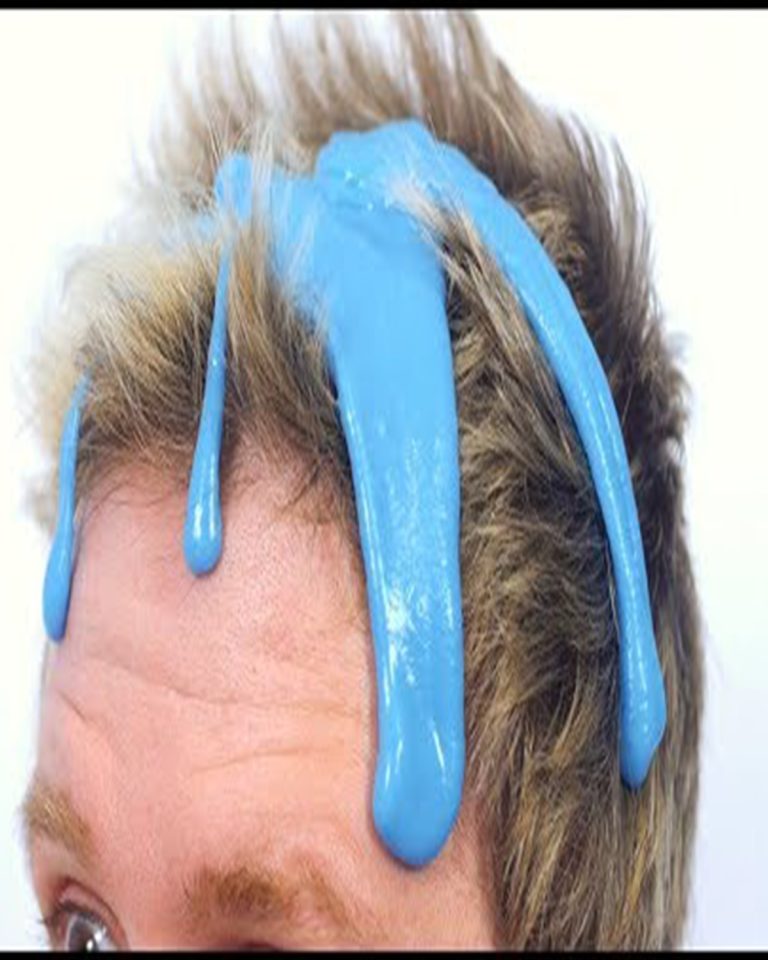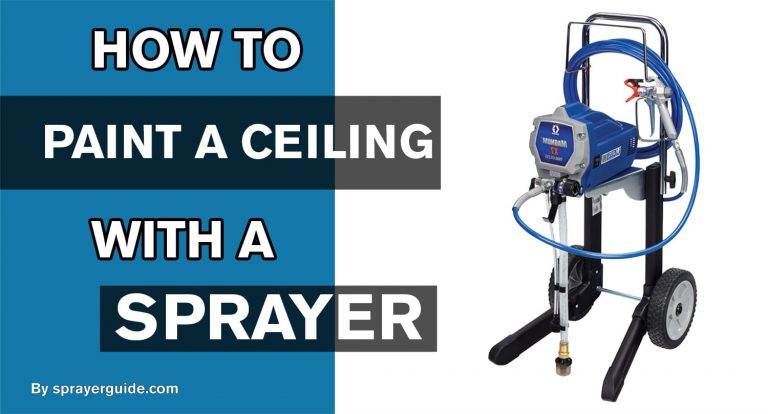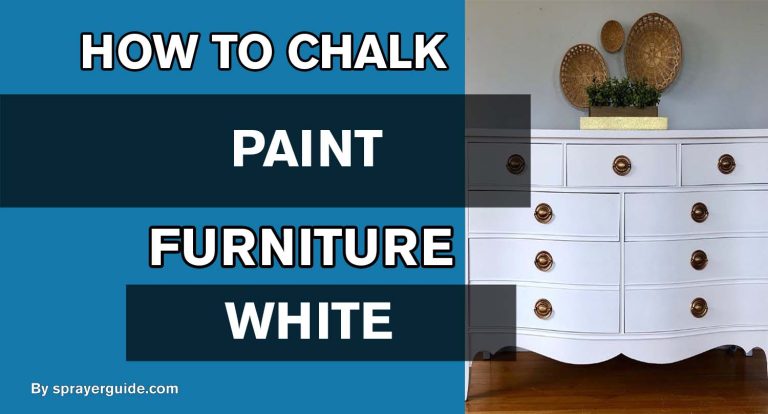A few methods can be used to thin paint; the best way to use them depends on the paint type and the desired results. In general, however, paint thinning can be accomplished by adding a solvent or diluting the paint with water.
Adding a solvent to the paint is often the best way to thin it in a spray gun. The most common solvents used for this purpose are mineral spirits or turpentine. These solvents will help to thin the paint and make it easier to spray.
Another option for thinning paint is to dilute it with water. This can be done by adding a small amount of water to the paint and stirring it well. This method is often used for latex paints, as they can be thinned with water without affecting the quality of the paint.

What Should You Know About Thinning Paint for a Spray Gun?
If you plan on using a spray gun to paint your next project, knowing how to thin your paint properly is important. Depending on the type of paint you’re using and the desired results, the amount of thinning required will vary.
Generally, paint should be thinned when it’s too thick to flow freely through the spray gun or not to atomize correctly. Always start with less thin and add more as needed when in doubt. You can always add thinner, but you can’t remove it once it’s been added!
There are a few different ways to thin paint for use in a spray gun:
- Mix the paint and thinner with a paint stirrer attachment on your drill.
- Use a paint shaker to mix the paint and thinner.
- Mix the paint and thinner into a clean bucket with a stir stick.
- If you’re using water-based paint, add water until it reaches the desired consistency.
Once the paint is thinned, it’s important to strain it through a fine mesh strainer to remove any clumps or debris that could clog the spray gun.
Now you’re ready to prime and paint! Be sure to follow all safety precautions when using a spray gun, and always practice on a scrap piece of wood or cardboard before beginning your project.
What You’ll Need for Paint Thinning
You’ll need a few things to get started with paint thinning:
- A thinner: This can be anything from white spirit to turpentine and is used to dilute the paint so that it can be easily applied to your surface.
- A container: This will be used to mix the thinner and paint.
- Paint: Any paint will do, but you may want to experiment with different types to see what works best.
- A Spray gun: This is used to apply the paint to your surface.
To thin your paint, you’ll need a few key ingredients. First, you’ll need to paint thinner. Paint thinner is a solvent that can be used to thin oil-based paints. You can purchase paint thinner at most hardware stores.
Next, you’ll need a container to mix the paint and thinner in. A plastic container will work fine. Finally, you’ll need a stir stick to stir the mixture.
Once you have your supplies, pour the paint into the container and add the paint thinner. Stir until the mixture is smooth, then use it as you would any other type of paint. Remember, always read the labels on the paint and the thinner to ensure they are compatible.
With these simple supplies, you can easily thin your paint and get the perfect consistency for your project.
How to Thin Latex Paint?
Latex paint should be thinned by at least 10% (one gallon of paint to one-quarter cup of water). If you are not using an airless sprayer, complete this step. However, whether utilizing an HVLP sprayer or a hand-held system, you may need to add 20-30% more water.
The easiest way to determine the amount of thinner is to experiment on a small test area first. Add thinner until the paint flows easily and smoothly from the painting device without producing drips or runs. Be mindful that too much thinner will make the paint job difficult to control and could result in an uneven coat.
Finally, check the paint can be instructions before adding any thinner as some commercially-available latex paints are already pre-thinned.
Tip:
Be sure to clean your painting device thoroughly after each use to prevent the paint from drying and clogging the equipment.
How to Thin Oil-based Paint for your Spray Gun?
Oil-based paint is thicker and heavier than latex paint, making it more difficult to apply evenly to surfaces. When using oil-based paint in a spray gun, it’s important to thin the paint out so that it can be properly atomized by the gun. Otherwise, you’ll end up with an uneven finish and much-wasted paint.
There are a few different ways to thin oil-based paint for use in a spray gun. The best method will depend on the type of paint you’re using and the project you’re working on.
You can add mineral spirits or white spirits for most oil-based paints to thin it out. Start by adding a small amount – about 10% – and mix it well. If the paint is still too thick, add thinner until it reaches the desired consistency.
Another option is to use a commercial paint thinner. These products are specifically designed to thin out oil-based paints and make them easier to spray. Follow the manufacturer’s directions when using a commercial paint thinner.
If you’re having trouble getting the paint to the right consistency, you can also try using a paint conditioner. These products help to improve the flow of the paint and make it easier to atomize. Paint conditioners are available at most hardware stores or online.
Once you’ve thinned out the oil-based paint, be sure to clean your spray gun thoroughly before using it again. Paint thinners and conditioners can build up in the gun and cause problems down the road.
You can easily thin out oil-based paint in your spray gun with a little patience. Following these tips will give you a smooth, even finish that will look great on any project.
Frequently Asked Questions:
This is a question that many people ask when they are looking to use a spray gun for the first time. The answer is yes; you will need to thin paint for the spray gun in most cases. There are a few exceptions to this rule, but you will need to thin paint before using it with a spray gun.
The reason why you need to thin paint for the spray gun is that the paint needs to be a certain consistency to atomize when it is sprayed properly. If the paint is too thick, it will not atomize correctly and look like a mess. On the other hand, if the paint is too thin, it will run and drip everywhere. So, finding the right consistency for your paint is essential for a good spray job.
Now, you can thin paint for a spray gun in a few different ways. The first and most common way is to add water to the paint until it reaches the right consistency. However, this method can sometimes lead to paint that is too thin and runny. If this happens, you will likely have an uneven finish on your project.
Another way to thin paint for a spray gun is to use a thinner specifically designed with paint-spraying equipment. These thinners usually do a better job getting the paint to the right consistency without making it too thin. However, they can be more expensive than just using water.
Finally, using a paint conditioner can also thin paint for a spray gun. Paint conditioners are designed to help the paint flow more easily through the spray gun nozzle. This can make a big difference in the quality of your finished project.
So, there you have it. Now you know why you need to thin paint for spray guns and how to do it properly. Remember to experiment a little until you find the right method for your project. With a little practice, you should get great results from your spray gun no matter your method.
Many people thin paint with water because it is a convenient way to do so. However, some potential problems can occur when you thin paint with water. Water can cause the paint to become runny and difficult to control. It can also lead to the paint drying too quickly, making it difficult to achieve a smooth finish. In addition, water can cause the paint to lose its pigmentation and become lighter in color.
If you thin paint with water, add only a small amount at a time. Slowly add more until you achieve the desired consistency. Also, stir the paint frequently while working with it to prevent any uneven drying or color changes. Finally, allow the paint plenty of time to dry before adding any additional layers or topcoats.
If you’re using an oil-based paint, you’ll need to thin it out before putting it in your spray gun. You can mix the paint with mineral spirits or white spirits. Once the paint is thinned out, it should be able to flow through the gun easily.
When you’re ready to spray, hold the gun about 6-8 inches away from your painting surface. Begin with a light coat, moving the gun in even, sweeping motions. As you get more paint on the surface, you can increase the pressure slightly to build up the coverage.
Once you’re finished spraying, clean out your gun immediately. Oil-based paints can dry and harden quickly, so it’s important to clean the gun as soon as you’re done using it. Pour mineral spirits into the gun and run it through until the paint is completely cleared out.
Choosing the right paint for your project can be tricky, especially if you’re using a high-volume low-pressure (HVLP) paint sprayer. But don’t worry – we’re here to help.
You’ll need to consider a few things before choosing a paint, such as the type of project you’re working on, the material you’ll be painting, and the finish you’re hoping to achieve.
For most HVLP projects, we recommend using acrylic paint. This type of paint is specifically designed for use with HVLP sprayers and provides a smooth, even finish. It’s also durable and easy to clean up.
If you’re working on a larger project, you may want to consider using latex paint. Latex paint is thicker than acrylic and can provide better coverage on large surfaces. It’s also easier to clean up than oil-based paints.
Whatever type of paint you choose, ensure it’s compatible with your HVLP sprayer. Not all paints are created equal, and some may clog or damage your sprayer if they’re not meant for use with an HVLP system.
Now that you know what to look for in an HVLP-compatible paint, it’s time to start your project! We hope this guide has helped you narrow your options and choose the best paint for your needs.
Conclusion:
In conclusion, the best way to thin paint for a spray gun is by using a paint thinner or mineral spirits. You can also use water for latex-based paints. The key is slowly adding the lighter until the color reaches the desired consistency. Always test the paint on a piece of cardboard before spraying it on your project.
Read More:
- How Long Does Primer Spray Paint Take To Dry
- How To Thin Water-Based Paint For Roller
- How Long Does Spray Paint Take To Dry Metal
- Is It Better To Spray Or Roll the Interior Paint
- Does A Paint Sprayer Use More Paint Than A Roller
- How To Thin Water-Based Paint For Spraying
- How To Clean Wagner 350 Paint Sprayer
- How To Paint A Textured Ceiling With A Roller
- Which Is Better Air Or Airless Paint Sprayer
- How To Use Hvlp Spray Gun
- How Long Does Spray Paint Take To Dry On Cardboard
- Graco Magnum Prox17 VS X5






